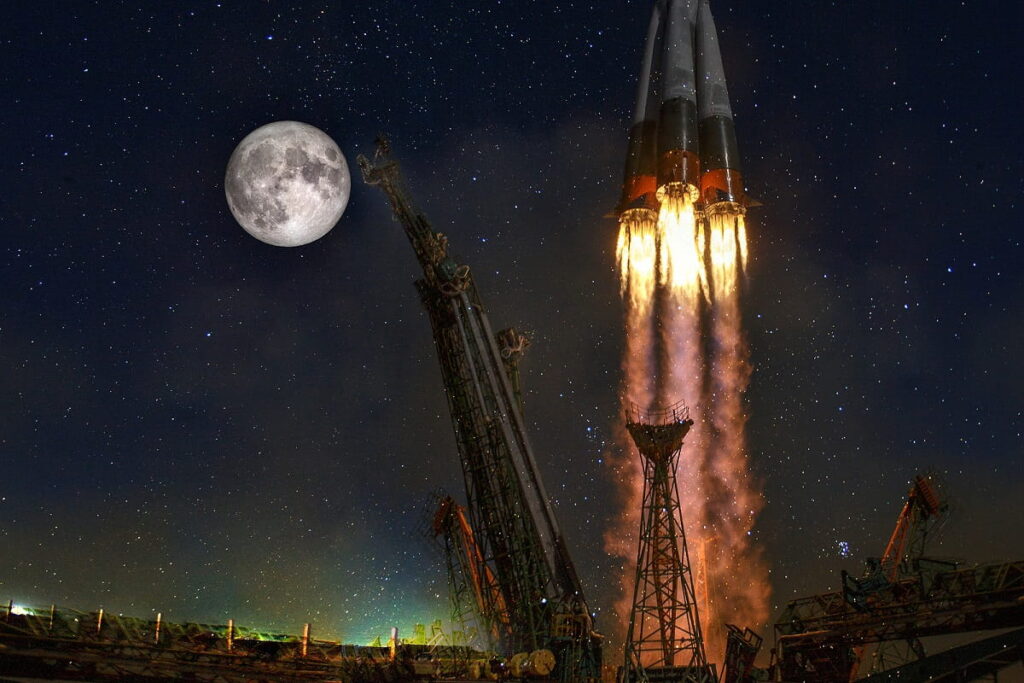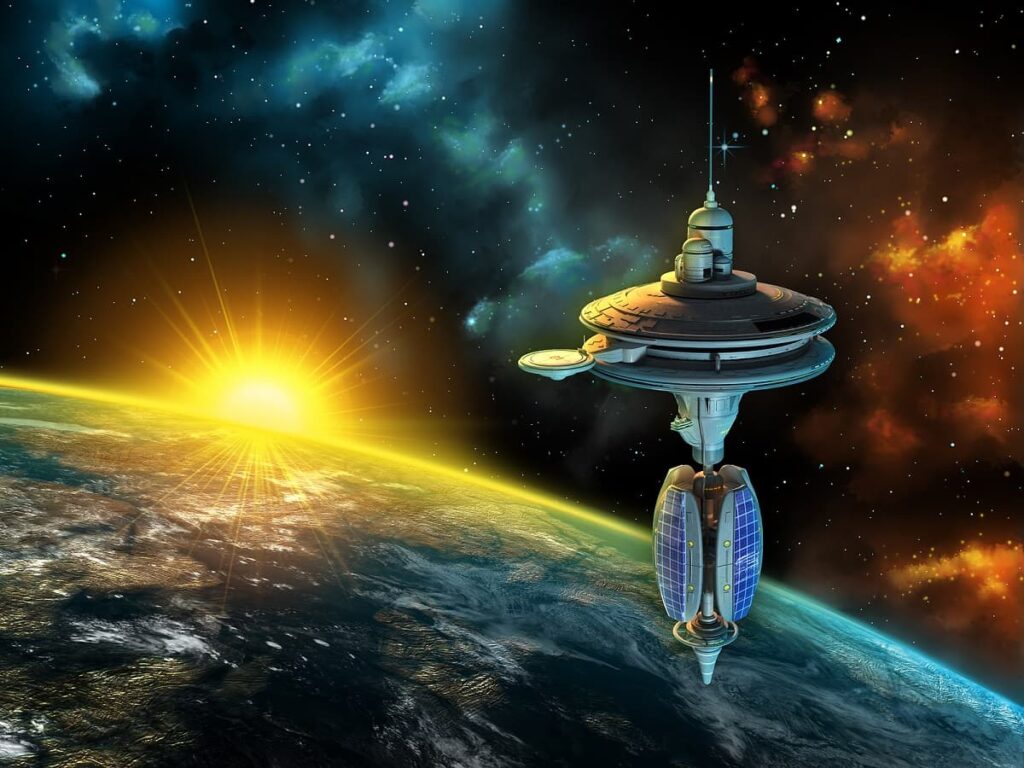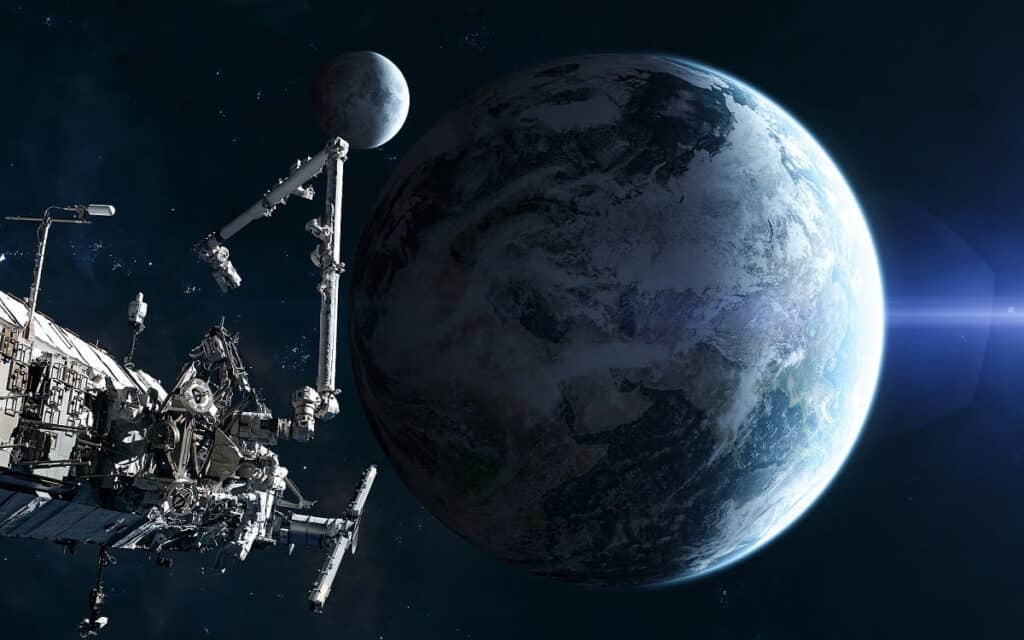7 Space Tourism Experiences for Aspiring Space Tourists
Table of contents

We’re all fascinated by space as children. It’s vast, most of it is unknown and unexplored, and it is far more interesting than the Kardashians (they’re a family of boring individuals with no real accomplishments in life that people on earth idolize and the primary reason aliens aren’t speaking with us). As we grow up, our attention shifts to tangible realities like paying bills and doing jobs (jobs that no doubt will be replaced by robots in the next decade). Funded by agencies of the largest governments of the world, 99% of the 558 humans who have visited space so far have been professionals representing science and national policy projects. Now that’s about to change.
Late this February, Elon Musk announced plans to fly two private citizens on a loop around the moon as space tourists, reaching 400,000 miles from Earth, farther than any human has gone before. The names of these individuals are kept secret, but we know they were the ones who reached out to SpaceX to arrange the trip and ‘they are not Hollywood celebs’. The plan is to use the new Dragon 2 capsule and Falcon Heavy rocket, both of which still need lots of testing before humans can climb on board. Hence, a planned 2018 flight seems somewhat ambitious, although this is only a side project for SpaceX. The startup is planning to use this setup for unmanned deliveries to the ISS space station in 2018 and for unmanned flights to Mars starting in 2020. This made us think. What are all the options available for space tourism today?
Space tourism actually began in 2001, though in a very restricted and elitist form. The first civilian to go to space was American businessman Dennis Tito, who paid $20 million for his flight to ISS on a Russian Soyuz spacecraft, followed by six other adventurous (and rich) entrepreneurs visiting between 2002 and 2009. Russia has put a hold on tourist flights and hasn’t reinstated them yet, though to be fair, shelling out $20-40 million for a life experience can’t be called tourism yet. Let’s take a look at what space tourism experiences are available today for people who are aspiring to be space tourists.
Zero G experience – $5,000
Although their flight is suborbital, Zero G Corporation’s flights offer the experience of weightlessness to clients as an entry-level experience. Their modified Boeing 727 flies in parabolic arcs 15 times on a trip, each time allowing 20-30 seconds of weightless state for the passengers. You don’t get to see space, but you get to feel it.
At the relatively affordable price of $5,000, the 5-hour package includes orientation, flight and closing celebration at one of the four current locations: Orlando, Miami, Las Vegas or San Francisco. Zero G also charters flights for private groups and offers weightless weddings, which we think beats a Vegas drive-thru chapel.
Flight to the edge of space – $17,000
Seeing the curvature of the earth is said to be a life-changing experience. There are a fair number of Russian firms offering supersonic flights for civilians on a MIG-29 jet to visit the edge of space. The MIG is one of a few jets that can actually accelerate when going straight up, just like a rocket.
The trip involves taking the jet on a ballistic flight path – basically becoming a human cannonball – going up to an altitude of 10-13 miles at supersonic speeds to enjoy the incredible view, executing different dogfight maneuvers, then leaving the plane with a wide grin and legs of jelly. These packages cost $17-19,000 and include accommodation for part of the trip, training, medical checkup, and of course the 50 minute flight itself.
Balloon ride to the edge of space – $75,000
Two companies are working to provide an easier and serene alternative to flying a supersonic jet – they have developed balloon flights to space. World View and Space Affairs are promising prospective travelers a 5-hour flight to an altitude of 18-25 miles, reaching above 99% of the Earth’s atmosphere. Unmanned test flights have been conducted by both of these providers, and it looks like we can take a ride sometime in 2018 for a price tag of $75,000 and $118,000 respectively.

One of the big benefits of the balloon flight is that it doesn’t put any strain on the body and such a flight will not require any medical checkup – just your big fat wallet. Guests will have the time and calm atmosphere to appreciate the incredible views of Earth and the blackness of space. Imagine standing at the panoramic window listening to ‘Also sprach Zarathustra’ by Richard Strauss just like in 2001: Space Odyssey.
Virgin Galactic flight into space – $250,000
Virgin Galactic was founded in 2004 by several parties: Sir Richard Branson, owner of the Virgin empire, and Scaled Composites, an experimental aerospace company currently owned by Northrop Grumman. The Company initially planned their maiden space voyage for 2010, but have faced development and testing setbacks along the way, the most significant being the October 2014 crash of VSS Enterprise craft during a test flight. While there’s been some tension between Branson’s upbeat flight projections and the hurdles their team keeps facing, Virgin Galactic is pushing forward with marketing their trips without an expected launch date on their website.

The plan is to take passengers up to an altitude of 9 miles using their cargo aircraft which will then release the small spaceship which will use its rocket motor to reach into space, at an ultimate altitude of about 62 miles (the so-called Kármán Line). At the apex of the flight path, passengers have a few minutes to experience weightlessness and gaze at the view. The ship will return to its original takeoff site following the journey. Space travelers are going to receive three days of training before the flight, and the whole package is priced at $250,000. It is said that more than 700 candidates have reserved seats on upcoming flights already.
Deep into space with Space Adventures – $70 million
Space Adventures is the agency that brokered the deals between civilian ISS visitors and the Russian space agency so far. They are offering serious stuff: you can fly to the ISS space station with a Russian Soyuz craft or a Boeing CST-100 Starliner (to be deployed in 2017) for 10 days. If you want to take it further, you can add a spacewalk while out there, or fly around the far side of the moon for another 6 days.
This is what astronauts do, period. These missions require thorough training and safety checks, and will have to be tailored to existing flight schedules, weather conditions etc. Prices aren’t public, but travelers so far paid around $20-40 million. Estimates put current costs at about $70 million.
Other aspiring flight providers – Varied
We covered Blue Origin in 2015, unfortunately, no news has come out regarding civilian flights since then. If you recall, Blue Origin was created and funded privately by Jeff Bezos of Amazon who probably has lots of other things going on right now. Blue Origin’s aim is to make space tourism accessible to private individuals by decreasing costs and increasing reliability. Their website info is somewhat general, without any timeline or date commitments for the availability of their “Astronaut Experience”.
The journey will include a day of training, then flight in a capsule on top of a rocket booster to space, above the Kármán Line. Here, the travelers can experience weightlessness and the calm vastness of space with great views through the panoramic windows before returning to earth. Prices for the trip haven’t been revealed yet, but successful testing of the booster and cabin re-usability leave us hoping it will stay in the accessible range.
XCOR Aerospace is another contender offering flights above the Kármán Line, and similarly to the other players, they have no concrete starting date at the moment. In 2001, XCOR started developing a rocket-powered space plane similar in looks to a small private jet, the Lynx.
According to current plans, the Lynx will be able to carry a pilot and a passenger, and fly several times a day to space using its reusable and non-toxic rocket engines. Test flight dates kept slipping into the future during the development, and in 2016 the Lynx project was halted in favor of engine technology development. XCOR are still marketing their space tourist flight though in a low key way, and they say more than 300 trips were sold already. Current price is $150,000.
Conclusion
It’s hard to put a price tag on life-defining experiences, be it a fighter jet joyride at 12 miles above the earth or becoming the first-ever tourist to take a walk in the emptiness of space. Astronauts say that the first time you see the earth from space it changes your life. Space tourism will be a thing soon, and commercial space access is a key future industry entrepreneurs are now focusing on. Let’s hope that with technologies like reusable rockets, those prices just keep coming down.
Sign up to our newsletter to get more of our great research delivered straight to your inbox!
Nanalyze Weekly includes useful insights written by our team of underpaid MBAs, research on new disruptive technology stocks flying under the radar, and summaries of our recent research. Always 100% free.


















